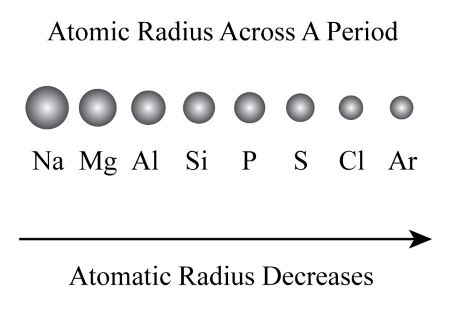The atomic radius is a fundamental concept in the field of chemistry and physics, often serving as a pivotal descriptor in understanding atomic structure and behavior. However, its measurement proves to be a considerable challenge. This enigmatic characteristic of atoms elicits both intrigue and perplexity, primarily because it is not a fixed value, but rather a designation that can vary significantly based on numerous factors. Understanding the reasons behind these discrepancies requires an exploration of atomic structure, measurement methodologies, and the underlying quantum mechanics.
To commence this discourse, it is essential to delineate what is meant by “atomic radius.” Generally, the atomic radius refers to the distance from the nucleus of an atom to the outer boundary of the surrounding cloud of electrons. However, this boundary is not clearly defined and is subject to change based on various interactions, complicating any efforts to pinpoint an exact measurement.
One predominant reason for the intricacies surrounding the measurement of atomic radii stems from the quantum mechanical nature of electrons. Electrons do not occupy fixed orbits around the nucleus; instead, they exist in probability clouds characterized by wave functions. These wave functions describe the likelihood of finding an electron in a particular region of space, producing a diffuse and nebulous electronic cloud around the nucleus. Consequently, the ‘radius’ of an atom is not a definitive boundary but rather a statistical average based on electron density. This inherent uncertainty challenges the precision necessary for assigning an ‘exact’ atomic radius.
The concept of the atomic radius is further complicated by the type of bonding an atom engages in. For instance, covalent radii, metallic radii, and van der Waals radii can all yield different measurements for the same atom, dependent upon its chemical environment. A covalent radius measures the size of an atom when bonded to another atom; hence, it is influenced by how closely two atoms approach one another. On the other hand, van der Waals radius applies to non-bonding interactions, which can yield even larger atomic radii. The variability in these measurements underscores the atom’s adaptability and the complex nature of real-world chemical interactions.
Moreover, the influence of electronegativity and atomic interactions cannot be understated. Electronegative atoms tend to attract bonding electrons more strongly than less electronegative atoms, thus affecting the spatial distribution of electron clouds. This variation can alter the perceived size of an atom in a molecule, further muddying the waters surrounding atomic radius measurement. For instance, the atomic radius of chlorine can differ when it exists as a chlorine molecule (Cl2) versus in an ionic compound (like NaCl). Such discrepancies invoke a deeper contemplation about how atomic radii cannot be viewed in isolation, but must be contextualized within broader chemical compositions and interactions.
The advent of advanced measurement techniques has also contributed to the complexities of defining atomic radius. Traditional methods such as X-ray diffraction and nuclear magnetic resonance (NMR), while effective to a degree, often yield averages over a multitude of atoms and are thus simultaneously limited. Additionally, more modern technologies like atomic force microscopy (AFM) and scanning tunneling microscopy (STM) have ushered in new capabilities in visualizing atoms, allowing for localized measurements. However, these methods themselves can be fraught with challenges including the distortion of atomic structures due to surface interactions when probing materials, which can lead to inaccurate interpretations of atomic size.
The interplay of these various measurement techniques and the underlying unpredictable nature of atoms creates a profound sense of fascination within the scientific community. Each measurement expands our understanding while simultaneously illustrating the limitations of our knowledge. Science, at its core, is a continuous quest for clarity amidst ambiguity. The atomic radius serves as a prime example of this dialectic; the more one investigates, the more one discovers the layers of complexity that govern atomic behavior.
Furthermore, this challenge extends beyond purely academic interest. The atomic radius has tangible implications in materials science, nanotechnology, and pharmacology. For instance, the efficacy of drug molecules often hinges upon their ability to interact with biological targets at the atomic level. Discrepancies in atomic radii can lead to markedly different interactions, which can consequently yield varying therapeutic outcomes. Recognizing the nuances associated with atomic measurements cultivates a holistic view of molecular interactions, underscoring the necessity for precision in fields that influence technology and health.
In summation, the difficulty in measuring the exact atomic radius arises from a confluence of quantum mechanical principles, variable bonding behaviors, electronegativity influences, and limitations in measurement techniques. This intricate puzzle not only captivates the intellectual curiosity of scientists but also invites future endeavors into unmapped territories of atomic theory and practical application. The exploration of these challenges is emblematic of the broader scientific narrative—a persistent pursuit of deeper understanding within a universe teeming with complexities.












